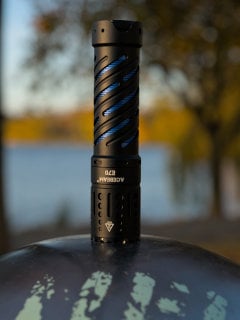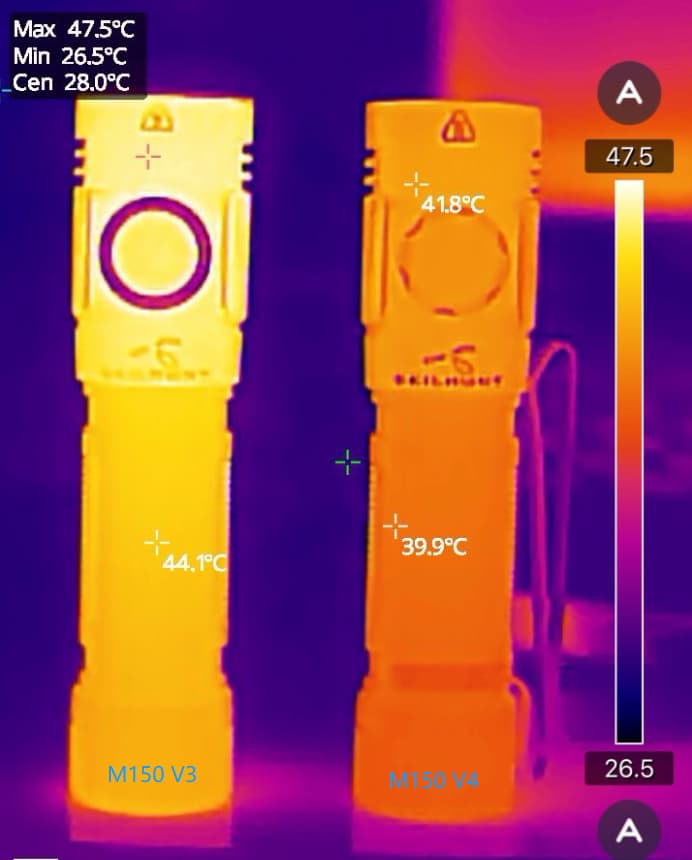For background, it’s hard to make a flashlight that works well on both AA batteries (0.8-1.7V potential operating range) and 14500 Li-ion batteries (2.8-4.2V operating range) given that white LEDs need about 3V.
For a long time, companies would make lights designed for AA using a boost driver that increases the output voltage, do just enough so it wouldn’t burn out with excessive input voltage, and say that 14500 size Li-ion was “supported”. Max output would, indeed be brighter, but low modes were usually far too high, and the flashlights could easily damage batteries that didn’t have over-discharge protection.
The Skilhunt M150 was one of the first lights to do a substantially better job. Using a Li-ion battery, it sent the power through a variable-output linear regulator so both battery types could have reasonable modes, and it would shut off to prevent over-discharge. Several competitors use a similar approach today, but linear regulators are inefficient; they just turn the excess voltage to heat.
The ideal solution is either to use a higher-voltage LED configuration and boost the output voltage for both battery types, or to use a driver that can both boost (increase) and buck (decrease) voltage efficiently. The Emisar D3AA is the only light on the market doing AA/14500 with a high-voltage LED configuration (three in series for ~9V), and I believe the new M150 will be the first one using the buck/boost approach (though it’s possible Zebralight has done it in the past).



Skilhunt has really shitty customer service. They sold me a flashlight with a broken charger and refused to replace it.
I don’t believe they read the comments here, but if you post a response about that issue in the BLF thread I linked, that might get their attention.
I gave them every opportunity to do the right thing. I’m only trying to warn others.